The Real Market With Chris Rising – Ep. 16 Lew Horne
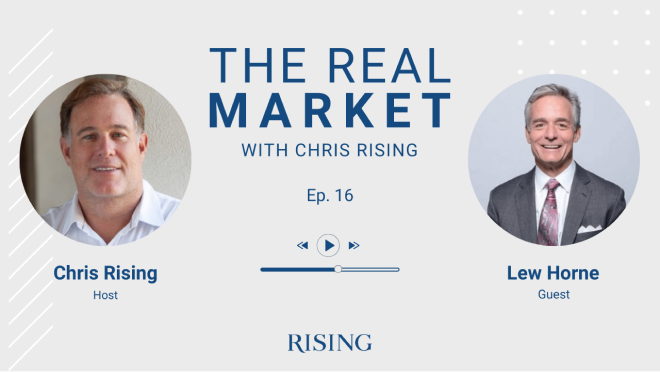
00:50 CR: Today I’m talking with Lew Horne, the President of the greater Los Angeles, Orange County region of CBRE, really, the West Coast, Southern California, and Hawaii. We have a really interesting conversation. We talk through what’s happening in real estate, specifically what’s happening in terms of the challenges that companies are facing today with their office space and their relocations. We also have a very good discussion about diversity in the workplace and what CB is doing to provide more opportunities to women and people of color, and we have an engaging discussion about some of the biggest challenges that our region, Southern California, is facing in terms of homelessness. So I think you’ll really enjoy the conversation. Thanks.
01:40 CR: Welcome to The Real Market with Chris Rising. I’m excited to have Lew Horne, who’s President of CBRE, Southern California and Hawaii. Lew, welcome to the program.
01:50 Lew Horne: Thank you, Chris, and thanks for having me.
01:51 CR: Well, it’s great to have you. We’ve been friends a long time, and it’s really been exciting to see what you have done with growing CB’s platform. CB has really become an unbelievable company in how it deals with office buildings and facilities. So I’m really excited to have you on to just talk about some of the things that you’re seeing. I have to get in a little bit to the big move that you did in moving CB, the corporate headquarters from offices to open plan. So I think we have a lot to talk about today.
02:25 LH: Alright, Chris, I’m looking forward to it.
02:28 CR: Give us a little bit about CB and your role at CB and CB as a global company.
02:33 LH: Sure, sure. Well, we’re a Fortune 200 organization. We’ve really grown rapidly over the last 11 years through mainly an M&A and strategic recruiting strategy. People don’t realize how fast we’ve grown based on M&A particularly, but we’ve actually acquired and merged with about 110 different companies over the last 11 years. So that part of the growth has really elevated us to an organization with over 500 offices globally with about 80,000 employees. Our primary area for what we do is really broken up into three different sections. The first would be the service company, which is the part of the company in the Southern California/Hawaii group that I run, and then there’s the Trammell Crow organization, which is a separate organization, and they’re one of the larger office developers in the country, and then we have a group called CBRE Global Investors, and they’re an investment conduit, as you know, for institutions and sovereigns etcetera, they deal with pools and basically are investing all over the United States and all over the world.
03:43 CR: And as it relates to what your day-to-day focus is, where does Southern California and Hawaii, how does that fit within a global company?
03:53 LH: Well, we’re, again, part of the service company. Within that service company, my job is to oversee our brokerage operation. And within brokerage, we handle office, industrial, retail properties. We have a group in, a capital markets team that focuses on private client, capital market, advisory, as well as institutional market. That’s one group. We have a division that handles valuations and appraisal, another group that handles debt and equity. We’re the largest Freddie/Fannie servicing company in the world. We’ve got a team that handles just corporate consulting, where they’ll do portfolio analysis, they’ll do labor studies, they’ll do that sort of thing, whether we’re attracting or working with large corporates that are looking at places to open up a headquarters or manufacturing plant. Through our M&A strategy, we acquired companies like the PKF hotel advisory group, which is a part of our group in downtown, so we do a lot of hotel consulting. We have a hotel division that just focuses on the acquisition and disposition. Part of our team is also in the property management and asset services group. We’ve got a project management team that focuses on the interiors.
05:22 LH: We also just acquired a company about six months ago called Heery, which does a lot of institutional infrastructure kinds of work, so they’ll do large educational platforms, that sort of thing. And then several other groups that my job is really to try to coordinate each one of those and making sure that we’re benefiting from the information that we’re pulling from each one of these different divisions, and then also really connecting the dots to make sure that we’re getting the best possible perspectives so that we’re delivering great outcomes to our clients. And basically, we break those clients down into two groups: It’s the occupier or the tenant and the investor or the developer.
06:07 CR: That’s a really thorough explanation. I think one of the things that I find amazing about what you and your leadership have done is I consistently see CBRE coming up as one the great places to work as an employee. And I think a lot of that is rooted in the fact that if you look at CBRE today, you’re as much a technology company as tech companies. Your technology heavily influences your company. Can you talk a little bit about how you’ve seen this transformation? And obviously, maybe give our audience a little feel into how you went from 30-year brokers having big offices to now having a headquarters where there’s no paper, and nobody has a desk with a picture on it.
06:51 LH: Oh, there’s a couple things there, and I think it’s a great question. First of all, when I jokingly talk to my colleagues about this, I feel like I’m not as much in the real estate business anymore as I’m really in the talent management business. And my job is really making sure that we have recruited and retaining the best possible talent out there in each of our groups, so that we’re providing great outcomes to clients. And we’re really focusing our company’s attention on the outcome of the client and figuring out what that client’s really looking for. And then really doing everything we can to exceed that client’s expectation. On the technology side, I mentioned we have acquired several companies over the last couple of years. The last three companies that we’ve acquired had been technology firms. So we are laser focused. We think we gather a lot of information with all of these different divisions. We think we can do a better job, and actually putting all of that information together, and coming up with real insight, and data, and strategy that would give us a competitive advantage over others.
07:58 LH: So we’re really spending a lot of time figuring out how we can take information from our asset services teams, brokerage teams, capital markets teams, and really go beyond just looking in the rear-view mirror like you would during evaluation, but really to try and to figure out forecasting where the puck is going to be. On the technology side, we really also started in Amsterdam about several years ago. But I think you referenced, how do we go to really an open plan where we have free address, and that sort of thing in the way that we’re occupying our own space? And so five years ago in downtown LA, we moved in to our new corporate headquarters on 400 South Hope with the idea of really practicing what we preach. We basically just tore up all of the assigned offices. We created an open plan. We digitized everyone’s paper. We went to a paperless environment where people really have the ability to get untethered from a specific office or a desk. So they really have the freedom to be able to work in an environment where they need to work for the day rather than have to focus on going to a specific desk with a picture of the family on it, and that sort of thing.
09:17 LH: We also in that same office space created a wellness platform. We did 50 physical things that went into our office space that make it a healthier environment, things like a heavy carbon filtration in the air, or cork substrates on the flooring that are better for your posture, circadian lighting that gives you lots of light according to the amount of daylight that’s coming in, making sure that everybody has access to daylight so that there are no enclosed offices. And then we even hired street artists to come in and really design and decorate the place because we really stripped away all of the personalized space because we really wanted people to be able to work with whoever they wanted to, and also in a manner which gave them more mobility, flexibility, and the interest of collaborating more with the different divisions that make up our firm. So that was really it, and from there, over the last five years, we’ve completed I think 45 additional locations all over the world and we have another 26 under construction.
10:27 LH: So when we bring a client into our space, we’re talking to them about how we… It’s basically we’re showing them we’re eating what we’re cooking here and we’re really focusing them on what we’ve done. We can talk about the specifics that we made in our own personal experiences, which make it much more of an authentic kind of consulting where it should.
10:50 CR: One of the questions I wanted to ask you and get a sense for you is one of the things that I see is that the type of entry-level job that someone in their 40s, and 50s, and even 60s have in their head of like, “Oh, this must be how the 22-year-olds are starting today.” It’s really radically different. And I look back to days when a real job was making sure that binders were put together appropriately, and a real job was someone get paid to make sure the FedEx went out. The world we live in today, those jobs have long since passed. And we talk about the technology being such a part of CB. What do you see about an entry-level job in the brokerage or something at CB today? How would you describe that job for the 22-year-old who’s fortunate enough to get hired? What’s she doing her first year or two as a broker in the business today?
11:51 LH: Well, as you know, Chris, our industry is very relationship-driven. And I think it’s really been one of the last to be disintermediated and we’ve really been on the outside of a lot of firms that have gone through revolutionary change because of technology, like the interns that we have right now or new employees that are coming in to our company, we’re interested in their ideas as we are interested in them learning about the services that we provide. There’s running your own business, and then there’s also your ability to be able to present ideas to clients that are meaningful and relevant. And so we’re very interested in new technologies, new organizational ideas. As I mentioned earlier, the last three companies that we acquired were technology companies.
12:40 LH: So the company that we just acquired is a company called Floored and what it does is it allows us to lay out space for a client based off of a blueprint and just an outline, just a rough outline. And from there it actually has the ability for us to change the style of the space so that we can go to an open plan, a closed plan, depending on what their… We ask a few questions and then we can immediately do a space plan, a rough space plan. But all the way to the point where we can actually… It’s geocoded so when we look out a window, we can actually see the view that you would have from that window regardless of what floor you’re on and that sort of thing. So it’s just stuff that you and I wouldn’t have seen when we were just getting started, but in working with a lot of our young people, we’re asking them what they would do with it and how they might find applications. And we’re finding that we’re really creating this evolution where we’re bringing in people that were open-minded to their ideas and I think based on the workplace strategy that we’ve employed in all of our new offices and the way that we work, we’re really demonstrating a nimbleness, which typically you don’t see in a large Fortune 200 company.
13:50 CR: How are you marrying the enthusiasm of young people coming out of school with their tech savvy with brokers who have really established themselves, say a Lyn Williams or a Todd Doney, people who’ve been in the business for a while and have that relationships? How are you getting them to work together effectively so it’s positive for both age groups in an age where technology drives so much?
14:16 LH: Well, we just make sure that we’re being really honest with the technology. If it’s not helping the professional with organizing their team, or if it’s not helping find solutions for clients, we’re not using it. It’s not an academic exercise for us or a game. We really are trying so that everybody is clear that if it doesn’t add value, we’re not gonna do it. So, there’s just been a level of honesty that we’ve maintained about all of that. But there also is an energy, and I think one of the reasons why some of these folks have joined our firm is they recognize that we’ve turned into a thought leader. We’re not afraid to experiment, we’re not afraid to fail on things.
14:57 LH: The downtown experiment of this 360 idea, or of creating an environment which was gonna change our culture, that was a big risk and I think there’s a big acknowledgment in the industry and even with our competitors that it was a risk that many didn’t think would work, and it did work. And I think we’ve been recognized for that. It’s really not just eating what we’re cooking, but we’re really practicing this idea of early adaptation and getting to the future first, or at least having that attitude. So we’re quick to experiment and we don’t mind losing, failing ’cause we learn from it. And we’re frankly learning more from the mistakes that we’ve made than from the successes that we’ve had.
15:40 CR: And then how do you see the brokerage? So you’ve got a development wing with Trammell Crow and you’ve got the investor wing with CBRE, and you’ve also got the valuation side of things, but brokerage in and of itself, whether it’s leasing, landlord side or tenant side, or investment sales for a more private investor or institutional, how do you see that brokerage business evolving over the next five years or 10 years?
16:06 LH: Well, I think for sure, for certain, you better be incorporating technology in your day-to-day. Clearly the relationships that we have with decision makers at the corporate level or at the one-off entrepreneurial level are critical ’cause they’re the ones making the decisions on who their service providers are, but we’re also really interested in working with clients that really wanna look at new ideas and we’ve had people come in and look at us, look at the experiments that we’ve successfully conducted and say, “We just wanna be like that. We really wanna try the new thing.” Or, “We wanna make sure that we’re not doing something that is gonna some way negatively impact our business.” I think space matters and I think the space that you’re in basically is a representation of who you are, and I don’t care if you’re in the legal business or if you’re in the service business or if you’re in the financial business. I think that space and the way that you operate in that space and the way that you’ve been able to train your employees around technology, it matters.
17:06 LH: It’s a view into the soul of that organization relative to, are you nimble? It’s like, if you were to walk into a law firm and see a law library, how would you feel about that law firm? That’s kind of a goofy example, but I think it illustrates what I’m talking about. There’s an authenticity to what we’ve done here and I’m proud of it. And I think that a lot of our senior, mid-level and junior brokers who are coming into the organization recognize that not only have we taken those opportunities to make changes and take risks, but what’s next? What else are we gonna do? And once you start living in that world of wanting to change, there’s a little bit of an endorphin there that makes you wanna look for more. It’s easier to do the next one.
17:57 CR: I agree with you, and I’ll tell you one of the things that I see and I’m interested to know from your side is we’ve really hit that point where software is eating the world in the sense that software is giving us the ability to be so efficient it sometimes, to me, it’s unbelievable. And I’ll give one example, which is, I never would have thought that I would drop somewhere in the line of seven hours of calls in my week off my calendar. And that’s purely because we now run everything through VTS and VC Brokerage from CB that we use and we love are doing it. And things that used to be… First, it was a fax and then it was sent to me as an Excel spreadsheet, and then we’d have a call for an hour on seven different properties. That was seven hours a week, or every other week that I don’t have to do now because I have a real-time VTS app that I open and I know exactly when there’s been a tour and it just boggles my mind. Are there other things that you’re seeing in terms of software that is making your job with a client easier that is being incorporated by your professionals?
19:12 LH: There’s no question about that, Chris. And I think what you’re talking about is the efficiency of your business which you’re right on. If you can manage your own business and be more efficient, then the true task is, now what am I doing with the balance of that time? Where am I investing that so I’m really optimizing the 24 hours I have in my day? But I also think with clients, if we’ve got the ability to disseminate information, or to take data from multiple sources and assimilate that into a single source and then sort it and slice it and dice it so that it really is providing insight, I think that’s when we’ve really arrived. We’re spending a lot of time doing that right now, whether it’s in the retail. We’ve got a whole group right now that’s just focusing on… It used to be we’d focused on demographics, but now we’re focusing on cell phone patterns or credit card patterns or who are those that are migrating in and out of certain ZIP codes and where are they coming from? Where do they live? What are their shopping patterns? We can find out so much information now so that by the time we go… Particularly, and for example, in a place like in downtown LA where it’s a brand new emerging market. These retailers wanna know ‘Who’s the customer? Where are they coming from?’ It’s a new customer.
20:31 LH: And the whole idea around being able to take all of that data that’s from unusual sources that we haven’t sourced before, and all of a sudden now turning that into information that we can provide to our clients that can allow them to make better strategic decisions is a game changer. It’s the same thing in logistics, in the industrial field, certainly in the office area. People will confuse what we did or what we’re doing in our CBRE 360 workplace strategy efforts with home working or with trying to promote people working outside of the office. That’s in fact not the case. We really are encouraging people to come to the office. In fact, we program our offices so that people can… They’re gonna come and they have joint opportunities to really share each other’s ideas. So we’ve got programming around areas that we call “The heart” so that people can come and come together and exchange ideas. We got nine different divisions in downtown LA and people who literally wouldn’t be bumping into each other but for the fact that we really don’t have hard wall offices anymore. So I think that really looking at data and in the way that we can organize data and then transform that into information that’s gonna be useful to our own capabilities and also our advisory capabilities is something that we’re very, very tuned into.
22:02 CR: Well, before we move on to other subjects, I’m always curious to understand a Fortune 200 company like CBRE. Is there any technology that you use beyond email? Is there a Microsoft product or Slack? Or is there something that you all use to communicate? Quite frankly, you don’t have to use email and you can track things or hold people accountable. I’m just curious if you have something like that.
22:27 LH: Sure. What we have is we have multiple work tracks right now going on in those areas. In fact, the person that I would want you to speak to… We have a new head of digital innovation that’s actually… He was the CEO of a company that we acquired called Floored. His name is David Eisenberg out of New York. And he came over here and we were so impressed with this young CEO that we made him the head of our corporate innovation group. And he’s studying… We’ve got probably 25 different tracks right now where we’re studying different software. Some of it we’re creating on our own, some of it we’re actually looking at outsourcing to third party companies.
23:04 LH: But for example, we’re working on this experiential idea that we’re starting to see symptoms of all over the marketplace and all of the obvious brands that are out there. And we’re drilling down on how do we apply technology onto wayfinding or apps that’ll make our agency leasing and our property management teams more effective in enhancing the experience of that tenant. Or at the corporate level, we’ve got several occupier organizations right now where we do facilities management, where we’re incorporating those apps into making the experiences of those employees much better. It’s all about retention and recruitment of talent now, whether you’re a tech company or a financial services company. And so, moving rapidly towards enhancing their daytime experience where they’re spending the majority of their life or making sure that there’s an educational component to your daily work life where people are learning more and more about how to be more efficient, involvement, collaborative through data is something that’s really core to our view.
24:11 CR: It’s amazing. One of the things to put it real simply that is amazing to me is how in 2018, how much we expect our personal lives and our business lives to overlap and have the same kind of amenities in our home that we would have and have that in the office. We’ve already crossed the Rubicon on that and we’re not going back. People really expect an experience out of the places they work and it’s…
24:36 LH: Yeah, and the excitement rate now too, is you look at what’s happening right now with some of the major institutions and the way that they’re bringing in these event planning organizations, or these organizations that are part of that experiential idea or concierge idea. We did this several years ago in Glendale, where we had two sets of concierge in our Glendale operation over by the Americana at Brand. One said the concierge was really dealing with the daily lives of our employees and the daily lives were getting them food services or coffee or making sure their cars were parked, that sort of thing.
25:15 LH: And then Caruso and CB actually put together this group called the Second Shift. And the Second Shift is, how can I help you outside of the four walls of your working environment? So if your 3-year-old needs a birthday party plan, we’ll take care of that for you. And that’s going through the Caruso organization in this kind of initiative called the Second Shift. “Can I help you get a reservation with your friends having nothing to do with work on the weekend in Malibu at a restaurant?” Or, “Can I help you with the tailor coming over to the office?” Virtually anything outside of the four corners of your daily work is part of that experience, and that’s been incredibly popular. And so I think at this stage, companies, landlords, and occupiers are really trying to figure out… They’re testing the limits of where does it fit? How do we scale it? How do we learn from these experiments? And I think we’re right in the middle of it right now. I don’t think anybody’s completely got it figured out. There are those that are really doing a good job but I think we’re right in the middle of that transition right now as we speak.
26:21 CR: I agree with you. And it’s amazing how far we’ve come, because I remember when I was a young lawyer working for Mike Myer, one of the things that tells very well was that he would ask me to go through every list to make sure that the tenant was not being charged for any concierge services or anything like that. I mean, going back to the late ’80s, early ’90s, tenants didn’t wanna pay for that stuff. And now this kind of experience in office buildings is what drives bringing talent to your firm. And so we’ve really changed. Let me ask you probably a more personal question is, how does someone who’s been in the brokerage business for about 35 years, who started as an industrial broker, how are you so receptive? What is it in you that makes you receptive to this kind of change? Because it hasn’t been the norm in the brokerage industry and you’ve been a leader in pushing the brokerage industry into this 21st century.
27:15 LH: Well, my career started at IBM so I’ve always been a little bit of a tech wannabe. Certainly, I’m not gonna say that I’m advanced in my technology skills but I will say I’ve always recognized the benefits of technology and started out right out of college. I was selling systems to inventory systems and manufacturing systems and payroll systems to companies and I recognized just the efficiencies of creating a digital world and how it wasn’t just the end product that you were benefiting from, but it’s what else you could do with the information as you were gathering if that would give you insight into your own company.
27:57 LH: I remember when I first came over to the company, I actually linked a bunch of these Apple Macintosh’s together and we’d have cables that were roped over our cubes and I’d have to tell my partners, “Hey, you gotta shut down that program ’cause I need to access it now.” You think about how far we’ve come, but I’m obsessed with really learning and changing and taking those kinds of risks. Doing this as long as I’ve done this, Chris, it’s been a constant case of reinvention. And I think that’s certainly what keeps me motivated and alive, and I think I’ve got an infectious enthusiasm around that and I’m excited to navigate into different directions. I mean, one of the directions, I don’t know if you’re gonna get into it right now, but I think it is really in this whole area of corporate responsibility and I’d love to make a few comments about that at the appropriate time.
28:56 CR: I was about to lead you into that. So not only have you been a real leader in taking CB, starting with the Los Angeles office, and then going outward through to the rest of the offices. Being a leader in technology, you’re also taking on some real leadership here in Southern California, here in Los Angeles. And I think we both share a passion that the companies should also do good for others while they’re doing well for themselves. Can you talk a little bit about what you were just saying that you have this passion for corporate responsibility and some of the things you’re doing around that?
29:33 LH: Well, I didn’t wake up one day with a passion for corporate responsibility and I will just be honest. What I see happening in Los Angeles is extraordinary. We’ve been the number one target for foreign investment for the last several years, vacancies in all product categories are going down. We’re an incredible community to live in, and you look at all of the things that are going well here in LA, and just about everything is going really well. But then I look at this homeless situation and it just feels to me that it’s something that is just, it’s out of control and it’s just not humane. So, that’s one dimension. It was really driving through Fifth Street and Sixth Street to get from downtown over to the Arts District we’re now seeing tents virtually pop up in every element of our community. It gave me pause and it made me wanna really look into the whole idea of, how do we get here and what’s the solution? And so I went through this quest of trying to get smart and initially in all the conversations I would have with people, generally people weren’t informed as to what was really going on in the street, and there would be a lot of platitude in all kinds of responses.
30:52 LH: So the more I got educated, at first I got mad, and then I started thinking this is something that I actually think we can solve. We’ve got initiatives right now. In fact, as I’ve mentioned to you, I’m standing in front of the Union Rescue Mission, I’ve got 14 interns walking through this right now because our entire intern program this year is dedicated to not only working with our teams learning about commercial real estate services, but each of them have a major project. We got 10 teams that have gotten major projects at the end of their experience. And this year’s project is gonna be finding the efficiencies in homeless shelters where we can help advise them on where we’re using our workplace strategy team and finding more efficiencies there. Also looking at SS properties, identifying sites for the city council and also for the County Board of Supervisors, where we can play a role and we’re trying to be frankly low key about this. We’re really not looking for any headlines on this. We really wanna play a role using our data and using our expertise to be able to help provide insight and solutions to our elected officials.
32:01 LH: I think the elected officials have got a tough job. The number one issue right now is that of capacity and enforcement. And on the capacity side, the biggest enemy out there is not sites, it’s not money, it’s Nimby. And so, we’re identifying different sites, our interns are going through and taking an inventory based on each council district and at each supervisorial district and we’re coming up with priorities around which ones could or should be developed first. We’re also looking at state and federal sites. We’re also looking at how can we play a role in providing a strategy around going after these sites so that the Nimby issue is not so extreme. So, let’s put all of that in a bucket, that’s in one bucket. The other bucket is I believe that as we build our organizations, I think the young professional right now that’s looking at the company that they wanna work with, they’re interviewing us as much as we’re interviewing them, and I think that going forward, you’re gonna see young professionals who wanna be in organizations where their values are in alignment and where they’re doing more for the community. And so to me, one of the things that we’ve been good at is building community inside of office space, in industrial and retail, but I think we also need to start looking at our external community.
33:29 LH: And so a big part of our social responsibility I believe as a company, certainly, in our headquarters location in Southern California is making a difference here and playing whatever role we can. I’m sharing this homeless situation for Jessica Lall over at the CCA and she said, “Lew, put together a committee,” and I said, “I don’t think we need a committee. I don’t think we need really to understand that we have a homeless issue, I actually think we need sites, and we need solutions, and we need a moonshot on… ” Which is by the way, in complete alignment with what the city council wants, complete alignment with what the County Board of Supervisors want and Mayor Garcetti wants, what every voter wants. If you look at the money that’s been raised and the attitude in our community virtually everybody wants this solved. But the challenge is, nobody wants it solved next to their house or next to their point of business.
34:19 LH: So I think what part of what we wanna do also is I wanna help create a single set of facts where everybody’s working off of those same stationary facts. What are the risks if we don’t do anything? What are the opportunities if we do? I think LA is the most innovative and treasure-rich community in the world. If we can’t figure this out here, where on Earth could we figure it out?
34:45 CR: Yeah, yeah.
34:46 LH: I think there’s a solution here, and I think it’s gonna take our ability to be able to provide respectful services right now. Chancellors all over this right now, they’ve done a great job in helping with the Pueblo project with the city. My hat’s off to Andy and to Rob, they’ve done a great job there. And I think all of us who run companies need to make this part of our corporate social responsibility work off of one narrative and rather than pointing fingers at people who we think should be doing the job, I think we need to put our shoulder in this.
35:23 CR: Mm-hmm.
35:23 LH: I really do. We all knew how many people were dying everyday, if we all knew really what the true issues were and what sites are getting turned down or what neighborhood associations are coming out in protest. The Veterans Administration site in West LA to me is an interesting one. 1890, that site was donated to the veterans yet we can’t get a project approved there? I mean, to me, something’s wrong here.
35:48 CR: It was donated on those expressed purpose, to give a place for veterans. Bobby worked on that very hard. The government has come in and we’re making slow progress, but the bottom line is that’s Nimbyism, if you’ve never seen it, because people in Brentwood have come out and people in Westwood have come out. And I’m not trying to point fingers at different communities, but this is really a societal problem, it’s a regional problem and we’re only gonna solve it if we all, in all of our communities, open our doors to having more development. So much of this is driven by lack of housing, and the fact that when someone loses a job they very rarely have next month’s rent and a security deposit and all that to move into another place and it forces desperate measures. Well, I think it’s terrific that we’re finally bringing the brain power around it because it is so complicated and our governments are not set up and not designed to go to the root of a lot of this and since so many of those who are elected officials depend on being re-elected, they’re not the best people to combat the Nimbyism of it all.
37:00 LH: I will say of the elected officials I’ve met with though I’ve been impressed with what they wanna get done, and they’re doing their best and I think they welcome the support of the business community and of the private sector. And I do think this is a joint fight, this is not something that we should be just looking at our elected officials to solve, it’s gonna really take all of us. And again, if people really recognized the potential threat… To me, the two major turning points for me, the two turning events to me are the hepatitis epidemic that started with 18 homeless in San Diego that went through the entire State of California impacting 555 different people with hepatitis, hospitalizing over 400 of them and killing 20 of them. If we think that we’re gonna keep this situation confined to the four corners of certain blocks or certain areas, it’s just a wrong. It’s just wrong. It’s not right. And the second one was the Skirball Fire that destroyed… It was hundreds of millions of dollars worth of damage for 20 different structures. It was a guy trying to keep warm.
38:08 CR: Yep. And that’s coming across the Southland right now is, I mean, now we’ve seen it in the Río Seco where we’re seeing tents come up underneath big shaded areas, and these are not bad people, these are people saying, “I just need help.” We’ve also, in our firm, taken on homelessness as an issue for all of our Los Angeles buildings and trying to create our tenets around trying to solve this. I find or our team finds the biggest thing we gotta do is get people in front of people who are homeless and see them as human beings, and it changes the conversation.
38:43 LH: Right. Yeah, you’re not born into it, right?
38:46 CR: Yeah.
38:47 LH: You’re not born into it, you’re one or two events away in your life from being there, right?
38:51 CR: It is so razor thin what put someone over. Yes, there’s a huge amount of our population who have mental health issues and all of that, but a lot of these are just young single parent, single mothers or young people who just had a bad month or two and there’s nowhere else to go.
39:09 LH: Couldn’t agree more. Couldn’t agree more.
39:11 CR: When you talk I think in a workplace traditionally, these are not subjects that people like to talk, it makes people talk about it, it makes people uncomfortable. And so, as you approach this with your team throughout Southern California, what is the feedback been from people who, at the end of the day they’re saying, “Look, I’m just trying to make a living to feed my family.” How do you get them engaged? What do you think is the role to get people more engaged and seeing this as part of their social responsibility as well as just a place to work?
39:45 LH: Well, I can tell you that this intern program for us has been a big starting point for us. We’ve created a database where we’ve made that database available to developers, we’ve had a couple of meetings in my office with the key developers that work in these specific communities, and we’re learning. And I’m not gonna say we have any answers or any answers at all, but I will say that we’re leaning into this hard. So we’ve created a database where we believe that we can sort and find sites that may work for our certain private developers. We’ve categorized national sites, federal sites, state sites, county sites, city sites, and then private sites where we think this might work. The intern program for me has been a vehicle to really then take what we’ve accumulated, the data that we’ve accumulated and put this into action.
40:38 LH: So generally, our intern programs we’re assigning certain sites, we have everybody compete against the same site. It’s really about learning from the intern’s perspective on how to get entitlements and how to get financing, that sort of thing. Here we said, “No, we’re gonna make this year, it’s gonna be real, we’re gonna have specific… You’re gonna be assigned to a specific district or a specific shelter or a specific… And you’re gonna come up with real alternatives.” And the way that these folks have embraced this and the way that our mentors and leaders within the offices have embraced this, has been heart-warming, and they are excited and they’re going home and telling their friends and their parents and it’s becoming frankly, and we’ve said to them that we’re not interested in an academic exercise here. It’s gotta be real. And if we can’t do it, if it’s not something that’s gonna be a real solution or something that we can really consider, then don’t do it. And so we’re adding this real dimension to this, and I actually think that at the end… And by the way, I’m sure there’s gonna be areas where we’re gonna do a strike in a mist, right? But there’s gonna be a lot of areas where I think we’re gonna make a difference.
41:45 CR: And this program really relies on having mentors, people who are long-standing employees of CBRE working with the interns. So that’s how you bring the company into not just making this an intern project, but a company project.
42:00 LH: Oh, no. Yeah, make no mistake, there’s several mentors on each site. We’ve got our research department on this, our marketing department on this. So during the course of this process, we’re actually educating our entire group and making it real. And again, we’ve had a great partnership with Gensler on this. They’ve really stepped up. And again, a big part of this is not doing this from the arm chair living room, but really going out and visiting the shelters. We visited PATH last week where we were at Salvation Army this week, or today actually, and I’m standing in front of Union Rescue as we speak. And we have our guys just combing through these areas, asking about the service providers, asking about how the financing happens, finding out specifically what we can do to help them specifically. And so the idea here is to create a real outcome, not an academic outcome.
42:54 CR: That’s terrific. This has been a wonderful conversation on this. One of the things I did also wanna bring up with you because I know it’s near and dear to both of our hearts, but one of the things about this podcast that I have found challenging and it’s really opened my eyes to it is that I’ve been trying to get a lot more diversity in terms of people who are on my podcast. And I have found it difficult to find senior leaders who are women or people who are of color who are willing to come on the podcast. There’s not a ton of people out there. What would you say about our business which, how did it become so heavily white male? And what are you seeing in terms of opportunity for women and people of color in this business?
43:41 LH: Well, you point out a real issue, Chris. And I’m glad you’re talking about it. As a company we’ve made it a core value to actually organize affinity group just because of our size and our influence in the industry. We’ve organized groups. We have a veterans group. We have the largest women’s network probably…I know we do in the industry, I think we’ve got several thousand that meet on a regular basis, one on an annual event in Chicago but meet on regular regional basis. It’s basically a program around mentoring. We have a gay and lesbian organization. We’ve got a veterans group. We’ve got a team that I, in fact, I just spoke to yesterday in our African American Network Group, our AAN group. And so we’ve identified areas where we believe we really do need to do more mentoring, to encourage more professionals in these affinity affiliations to join this industry.
44:44 LH: As you and I both know, it’s a great industry, and we’re desperately in need, I think, of more diversity in our industry at all levels. And so we’re very conscious of this and we’re keeping track. There needs to be more executives. There needs to be more first entry-level professionals, mid-level and mid executives in this space. And so, it’s a core responsibility for us. We’re taking it very, very seriously and I think that it’s really gonna… Well, nobody’s gonna wave a magic wand here, but it’s something that… And you know what’s interesting? With our team, you know some of our top people, if you looked at our top 20 professionals in the brokerage teams, I’d say almost half of those are women, people like Darla and Lyn and Lori, and others that are really… They’re unique and they’re extraordinary. Extraordinary. And they’re all mentoring. Barbara and all these women who are actually taking it upon themselves to be mentors, to really encourage others to follow in their footsteps.
45:47 CR: One of the thing I point out is how much the business has changed in that if you do not have diversity in terms of gender and race, and you’re senior level, it gets almost impossible from a landlord side to be able to attract tenants because the rest of the businesses that we go, people who would lease space from us are much more diverse than the real estate industry on the ownership side. And so…
46:10 LH: And it’s rapidly moving towards that too even more so.
46:12 CR: Yeah, so if you don’t have that kind of diversity, and it’s not because it’s some political statement, it’s that it brings different ideas, it brings different familiarities, and it makes people feel welcome in a way that reflects the world. I have two 13-year-old daughters who I say all the time, real estate’s a great business to get into, I think, because there’s gonna be lots of opportunities as it evolves. Well, as we wind down here, Lew, one of the things I also wanted to bring up was, you have moved in your career for being a broker into management and you’ve seen a lot of different changes that have happened within the real estate industry. Beyond technology, are there things that stand out to you in your career that you’re like, “Wow, I never would have seen this coming.” What would be some of those so that we can help us pinpoint where we think the puck may go from here forward?
47:11 LH: First of all, I think technology would be paramount without question. I mentioned earlier, now I do think this whole idea of what is your corporate responsibility, I think people are very interested in being associated with organizations where they have an aligned set of values. I also think looking back though, I think clients are looking for more than just one dimension. They wanna see your perspective from multiple dimensions. So I think the idea of full service, they may not be buying every one of your services, but they certainly wanna understand them. It’s the old adage with Henry Ford, where if you would’ve listened to his customer, he would’ve designed a faster horse. I think in a lot of cases, I think clients really wanna know what’s new and they wanna know not necessarily… They’re not telling you what they need, but they’re gonna tell you what kind of outcome they’re desiring. But at the end of the day, how they get there, in a lot of cases, they’re flexible.
48:10 LH: They wanna know that you’ve really thought through on multiple dimensions, different ideas. Listen, five, six years ago, just the thought of just renewing with patch and paint would have been an acceptable conclusion for any tenant. Today, if you’re not sticking your head up and looking around and finding out really what’s changing, you’re probably not doing your job. So I think the idea of whether it’s really finding it, not necessarily delivering a full set of capabilities, but at least having the perspective of those who are delivering those full sets of capabilities, of what is changing out there, what’s different, what could they be doing not just in their real estate spend, but actually what could they be doing in the structure of their organizations to make a difference in whatever it is that they’re providing, whether it’s a service or a product.
49:00 LH: So I would say that’s probably the big one. I think what we need is what you pointed out earlier, I think this idea around just more diversity. I think we’ve just gotta make those right choices now, and I think that’s gonna be something. It’s gonna be really, really important looking forward. But I think what really trumps everything is this idea around technology. It really has enabled us to, on the good side is that we can work anywhere, we can assemble information, we can keep thousands or millions of records on our cell phones, we can do a lot of things with technology. And the bad news is, there’s not a lot of white space left in life, right? If you’re on vacation and it’s over the weekend, you’re still in touch with what’s happening. And so, I think one of the things we gotta be careful of is making sure that you do, we do, really take the time to make sure that we’re in the presence or in present when we’re with our family and loved ones.
50:02 CR: I agree with you. We’re gonna end with a story. We had our quarterly retreat yesterday and one of the questions was, “What’s the longest you’ve gone in the last few years without checking your phone?” And I think the average amongst my senior team was somewhere around 14 hours. Honestly, we gotta work on this.
50:23 LH: That includes sleeping, right?
50:25 CR: That’s right, it does. Well, this has been a wonderful conversation and I really appreciate it and thank you so much for being on the podcast, Lew.
50:33 LH: And Chris, thank you for your leadership. You’re exemplary out there. You’re eating what you’re cooking as we’ve said earlier, and you’re really walking the walk. Thanks for allowing me the opportunity. I appreciate it. Good luck to you.
50:45 CR: Thanks Lew. Lew, that was a terrific conversation. I really thank you. For those interested, you can follow Lew on Twitter @lchorne. You can also follow CB SoCal @CBRESoCal. And as always, we’d really love you to go to Apple iTunes and subscribe. Please leave a review, that would mean the world. You can also go to chrisrising.com and subscribe to the podcast there. Thanks so much for listening.
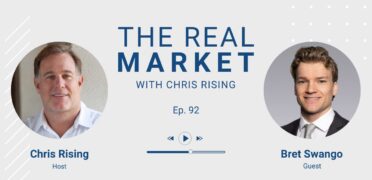
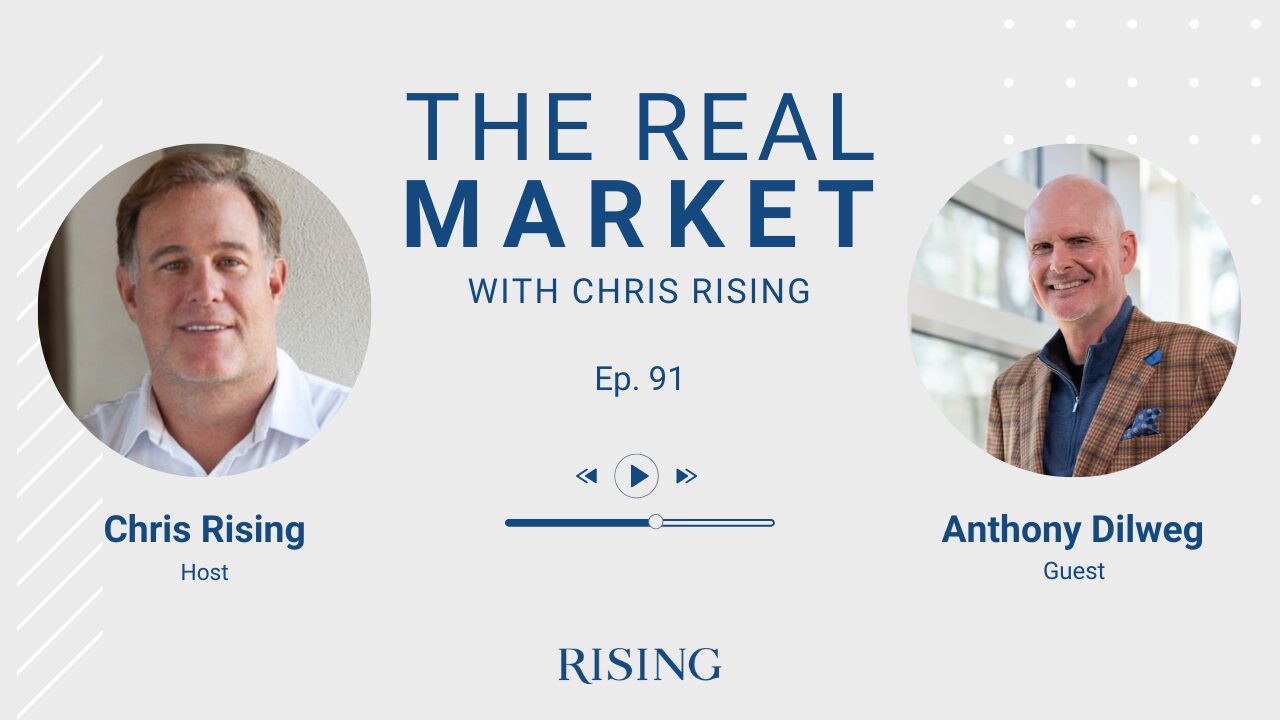
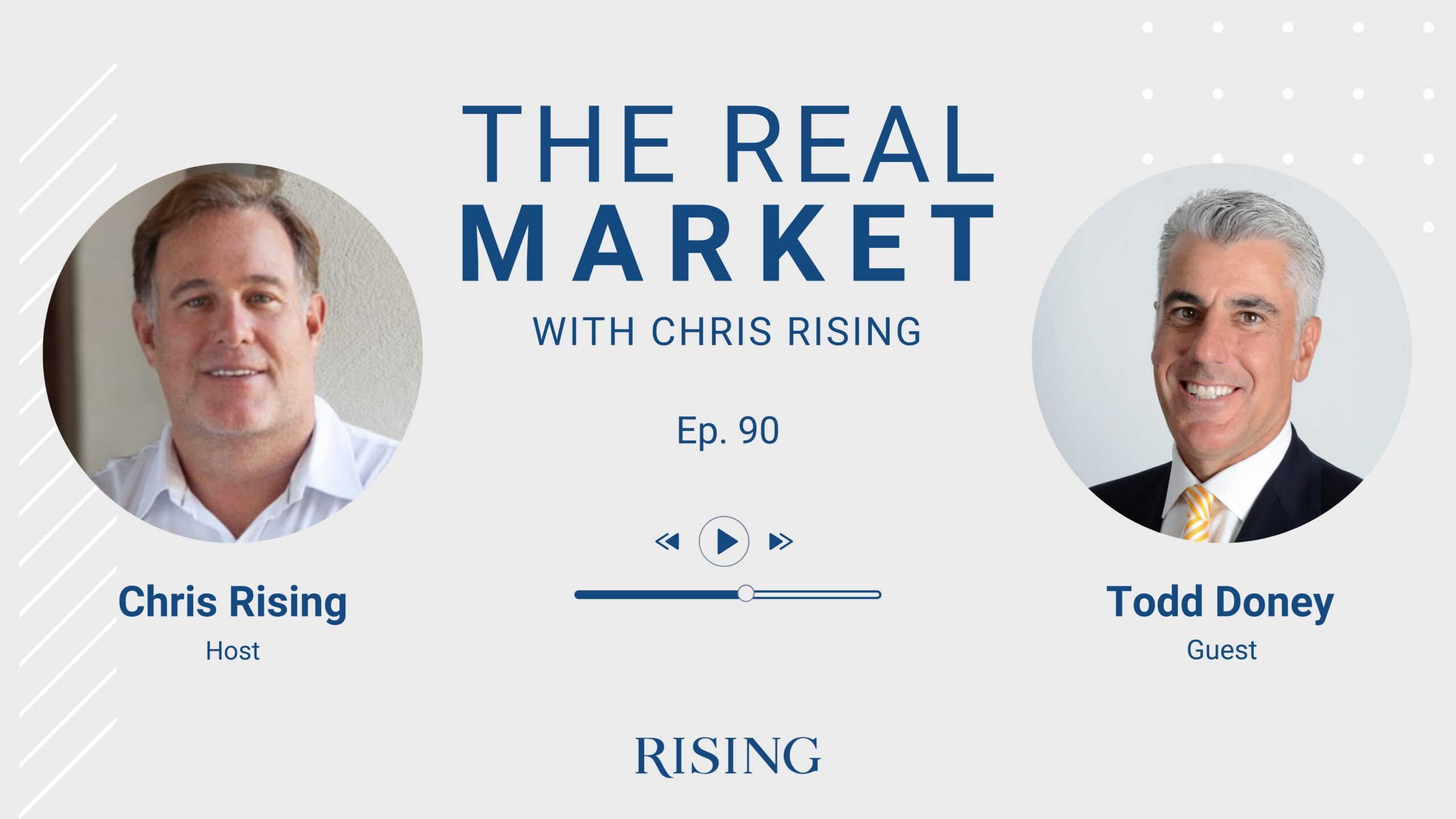
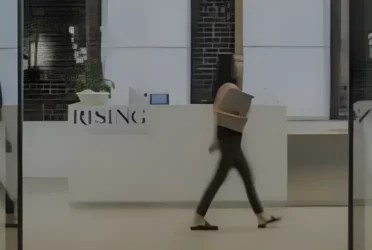 Our Company
Our Company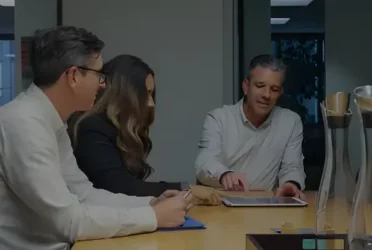 Our Team
Our Team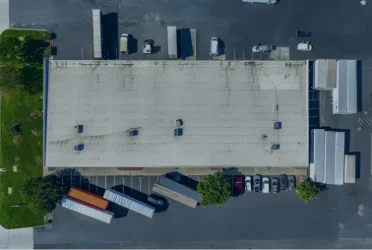 Portfolio
Portfolio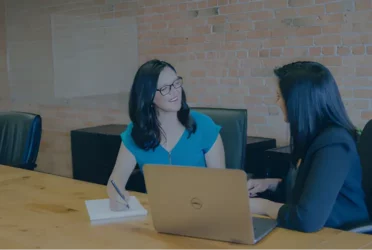 Services
Services News
News Insights
Insights Videos
Videos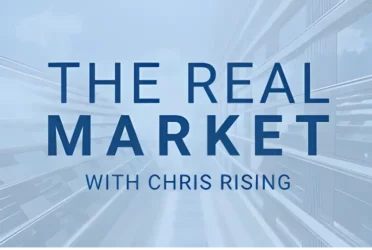 Podcast
Podcast